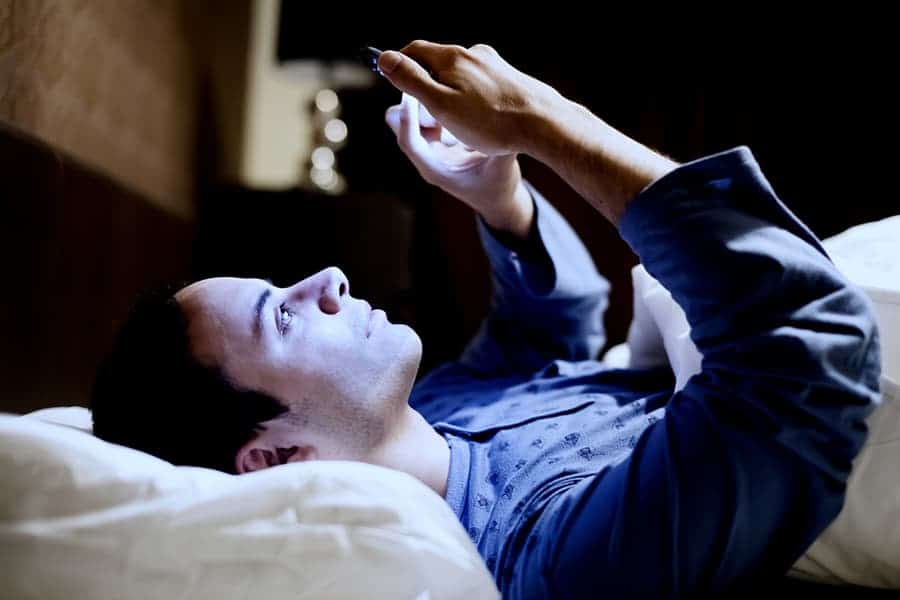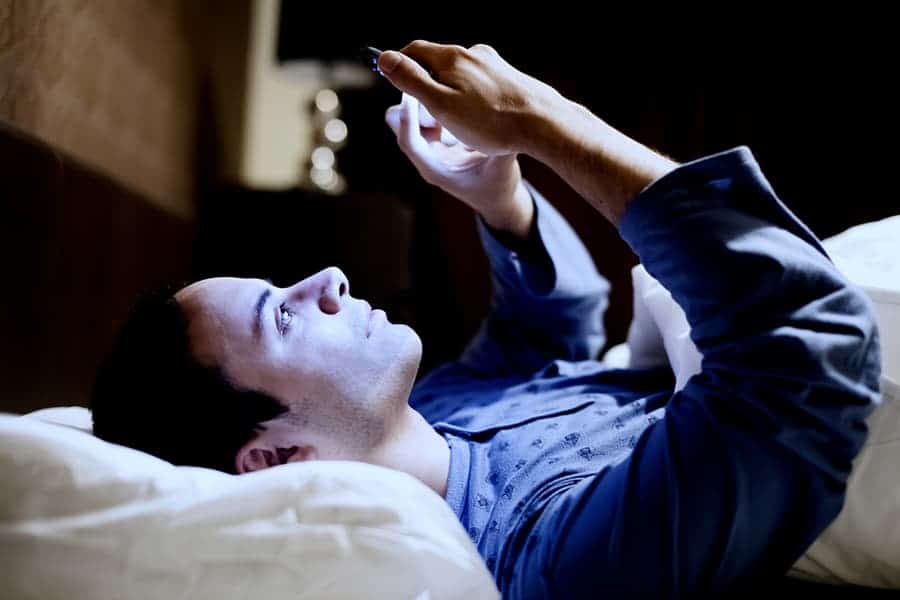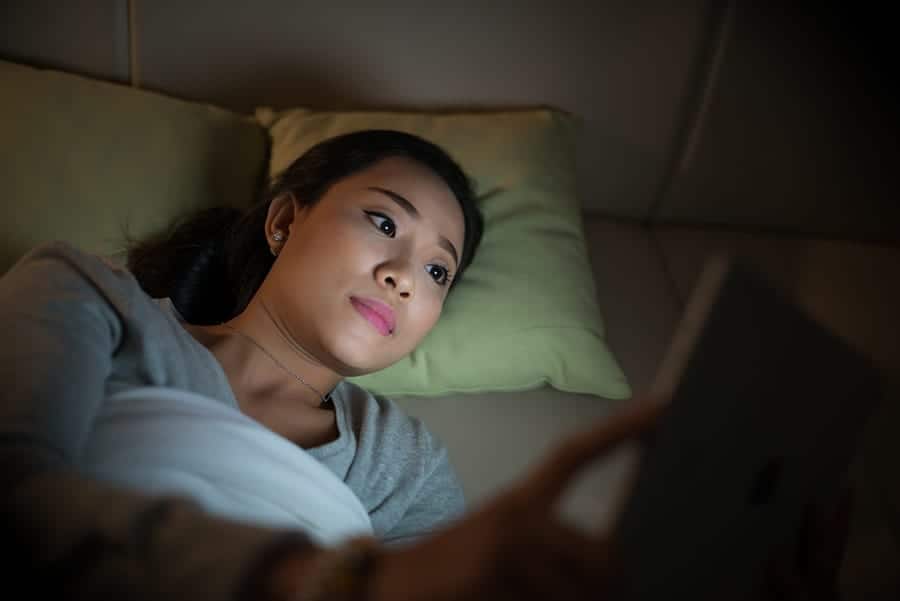Blue Light Effects On Sleep: A Simple Guide

What is Blue Light?
Blue light is a high-energy, short-wavelength part of the visible light spectrum, emitted by the sun, electronic screens, and artificial lighting. It plays a vital role in regulating our body’s circadian rhythm, boosting alertness, and enhancing mood during daytime hours, while its excessive exposure in the evening can disrupt sleep patterns.
Sleep. We all need it – ideally in optimal doses of at least 7 to 9 hours per night for adults, and increasingly more for teens, school-age kids, toddlers, and babies. It’s the reason doctors, the mattress industry, and even NASA itself have devoted decades worth of time and research into developing the best sleeping conditions, mattress technology, and sleeping positions designed to improve the quantity of your sleep.
What the aforementioned experts know better than anyone is that the quality of your sleep matters just as much as the quantity. In fact, poor sleep can contribute to chronic health conditions like obesity, heart disease, diabetes, and reduced immune function. What’s more, poor sleep can exacerbate issues like depression, anxiety, melatonin levels and more.

What Could Be Affecting Your Sleep?
Clearly, achieving a full night of quality sleep is beyond important. If you’ve ever woken up from a full eight hours only to feel less rested than before, you’re likely more than aware of the importance of sleep quality in addition to sleep quantity. Unfortunately, getting quality sleep can be a difficult task to nail down.
You have a supremely comfortable mattress, a solid foundation, and plenty of hours to devote to sleep – so what gives? Chances are, the sleep environment you’ve constructed for yourself could be what’s impeding your ability to get a great night of Zs due to blue light. Take a moment to ask yourself these questions:
- Do you watch Do you watch TV before or during bedtime?
- Do you spend time in bed using your mobile phone or another electronic device?
- Do you use energy-efficient lighting in your bedroom?
If you answered yes to some or all of these questions, blue light could be affecting your sleep.
What Is Blue Light And How Does It Affect Sleep?
Various colors of light exist across the entirety of the color spectrum, from red to violet. Blue light is simply artificial light in the visible spectrum that appears blue. It is produced by a number of sources – including the sun, which produces light exposure across the spectrum – and in large amounts by energy efficient lighting and electronic device screens such as televisions, phones, tablets, and computer screens.
So how does blue light affect sleep? Studies have shown that exposure to short wavelength blue light from the sun or optimal artificial lighting can provide a mood boost and increase feelings of alertness. In fact, the research even suggests that daytime exposure to blue light can help regulate the circadian rhythms and melatonin production necessary for good sleep – and good health. Unfortunately, blue light in the evenings is a completely different story adding to the chances of sleep disorders.

Why Is It Bad To Sleep With Blue Lights On?
Your sleep quality depends on the circadian rhythms better known as your body’s internal clock – the sleep/wake schedule your body constructs with the help of a hormone called melatonin. Under normal circumstances, your pineal gland (located between the two cerebral hemispheres of your brain) begins to produce melatonin a few hours before bedtime, peaking in the middle of your sleep cycle. However, research shows that short wavelength blue light suppresses the production of melatonin production, interfering with your circadian rhythms.
What Can You Do About Blue Light?
While you can’t completely eliminate blue light from the visible spectrum, you wouldn’t want to. As we mentioned earlier, exposure to blue light during the day has positive benefits and can actually help you maintain healthy circadian rhythms and promote melatonin production at the right time. However, you can take steps to reduce its effects on your body at night.
Follow these No-Bull, blue light reducing tips to boost your chances at achieving quality sleep:
- Banish your TV. Heading off to dreamland while watching your favorite show is a recipe for poor sleep. Not only are you effectively distracting yourself from the task of sleeping with stimulating noises and lights, you’re reducing melatonin production as well. Remove TV screens from bedrooms to cut a major source of blue light.
- Put down the devices. Even a little screen time in your bedroom diminishes the association your brain makes between your bed and sleep. In the one to two hours before bed – and particularly while you’re in bed in a darkened room – it’s important to avoid the blue light exposure caused by phones, tablets, and computer screens.
- Use night mode. If you just can’t manage bedtime without checking your phone or tablet, utilize your device’s night mode and dark mode settings. These settings replace bright background whites and blues with a darker black background and foreground whites with an amber hue that doesn’t disrupt melatonin production.
- Address bedroom lighting. Avoid using fluorescent, LED or energy-efficient lighting in bedrooms or bathrooms – another source of middle-of-the-night lighting. Instead, opt for warmer lighting with higher amber or red wavelengths that don’t affect melatonin production. Don’t forget the nightlights and alarm clocks!
- Try tinted glasses. If you’re still experiencing the ill effects of blue lighting, try using amber-tinted glasses in the evening. Blocking the short wavelengths of blue lighting in the few hours leading up to bedtime while reading, using a screen, or watching TV can help avoid a decrease in melatonin production.
- Use a sleep mask. Unfortunately, it’s nearly impossible to remove all forms of light – especially if you have a partner who’s less than concerned about quality sleep. If this is the case for you, you may have to resort to using a sleep mask to block out any remaining light.
Help Us Help You!
At No Bull Mattresses and More, we’re not just mattress sales people – we’re sleep gurus dedicated to helping you get the best sleep possible.
Of course, that starts with finding an ideal mattress that reduces pain and provides an optimal sleep position, but your quest for better sleep continues once you’ve got your new mattress at home. We hope our No-Bull tips for reducing the effects of blue light have helped you make some positive changes to your sleep environment.
For more information about finding the best mattress for you, visit a No Bull Mattresses and More warehouse near you.
SOURCES:
https://www.ucihealth.org/blog/2017/06/sleeping-health-issues
https://www.ncbi.nlm.nih.gov/pmc/articles/PMC4681241/
https://journals.physiology.org/doi/full/10.1152/japplphysiol.01413.2009
More Reading:
- National Sleep Foundation (NSF): A leading expert resource in sleep health, the NSF offers a comprehensive guide on blue light and its effects on sleep. Learn more at: https://www.sleepfoundation.org/light-and-sleep
- American Academy of Ophthalmology (AAO): The AAO provides valuable information on blue light, its impact on vision and sleep, as well as recommendations for reducing exposure. Visit: https://www.aao.org/eye-health/tips-prevention/should-you-be-worried-about-blue-light
- Harvard Health Publishing – Harvard Medical School: Harvard Health Publishing offers a detailed article on blue light, its sources, and how it affects sleep and overall health. Explore further at: https://www.health.harvard.edu/staying-healthy/blue-light-has-a-dark-side
FAQs
Yes, blue light does affect sleep. Exposure to blue light, especially in the evening, can suppress the production of melatonin, the hormone responsible for regulating sleep, making it more difficult to fall asleep and maintain restful sleep.
Blue light can affect sleep as long as you are exposed to it. It is generally recommended to reduce blue light exposure from screens and electronic devices at least 2-3 hours before bedtime to minimize its impact on your sleep quality.
Blocking blue light can indeed help you sleep better. Using blue light-blocking glasses, screen filters, or adjusting device settings to reduce blue light exposure in the evening can help increase melatonin production, making it easier to fall asleep and enjoy a more restful night’s sleep.
Dreaming about Getting Better Sleep?
we've got a friendly, knowledgable, passionate-about-sleep, straight-shooting, no bull sleep expert near you.


